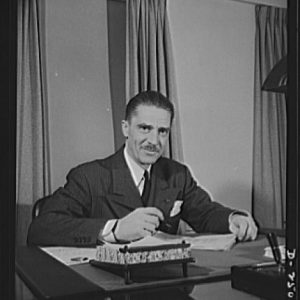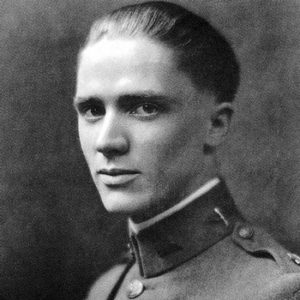calsfoundation@cals.org
Reed Gresham Landis (1896–1975)
Reed Gresham Landis was a World War I flying ace who also served in World War II before retiring to Arkansas to run a resort near Hot Springs (Garland County).
Reed G. Landis was born on July 17, 1896, in Ottawa, Illinois, the son of Winifred Reed Landis and Kenesaw Mountain Landis, a federal judge and longtime commissioner of major league baseball. Young Landis grew up in Chicago, Illinois, and, in the spring of 1916, enlisted in the First Illinois Cavalry, which was dispatched with other National Guard units to the Mexican border following Francisco “Pancho” Villa’s raid into U.S. territory. The unit returned to Chicago in November without seeing action, though the training the men experienced while deployed would serve them well during World War I.
After the United States declared war on Germany in April 1917, Landis joined the Officer Training Program at Fort Sheridan near Chicago, where he decided to pursue duty as a pilot during World War I instead of serving in the trenches. After joining the Aviation Section of the U.S. Army’s Signal Corps, he was sent to the University of Illinois’s Aviation Ground School to receive six weeks of instruction before being sent to England for flight training.
After training, Landis was assigned to the British 40 Squadron, where he soon gained a reputation as a skilled and ruthless pilot, crippling several enemy aircraft before scoring his first confirmed kill on May 19, 1918. He contracted pneumonia and was nearly killed in a German bombing raid in which the building he was housed in collapsed. He returned to 40 Squadron in July, however, and soon shot down two more German fliers.
After the death of his commander, Landis became the acting squadron leader in August 1918 and, in a matter of days, shot down six more enemy aircraft, ending the war with nine planes and one observation balloon to his credit. Only seven other Americans—including Arkansan Field Kindley—were credited with more kills than Landis.
On September 25, 1918, Landis was reassigned to the U.S. Air Corps as commander of the American Twenty-Fifth Aero Squadron. The new unit had to wait for weeks before sufficient aircraft were procured for them to go into action, and it was not until November 10 that they were able to make its first flight. A second flight the next day—the last day of the war—earned the Twenty-Fifth Aero Squadron credit as a combat unit, though its pilots never fought any enemy aircraft. Landis received the British Flying Cross and the American Distinguished Service Cross for his actions during the war.
Returning to the United States after hostilities ceased, Landis married Marion Keehn on September 20, 1919. They had one son and two daughters. She died on June 23, 1946.
Landis wrote two books: On the Roof of the War (1919) and Business Future of Aviation (1921). Landis was active in the American Legion, an organization formed by World War I veterans, and served as chairman of the Legion during the 1920s.
Landis became involved with American Airlines during the postwar period, rising to the post of regional vice president, but when World War II began, he served as a consultant to the Office of Civil Defense. He returned to active duty with the rank of colonel in 1942, serving in the Office of Chief of Air Forces and working with the Troop Carrier Command to help develop the U.S. glider forces.
Landis served as chairman of the Illinois Aeronautics Commission and ran an advertising firm before retiring to Arkansas in 1954, where he operated the Brady Mountain Lodge near Hot Springs for seventeen years. He sold the lodge in 1971 and moved to Hot Springs, where he died on May 30, 1975.
For additional information:
“Col. Reed Gresham Landis.” Findagrave.com. https://www.findagrave.com/cgi-bin/fg.cgi?page=gr&GRid=74072140 (accessed December 16, 2017).
Franks, Norman. American Aces of World War I. Oxford: Osprey Publishing, 2001.
Hudson, James J. “Reed G. Landis and ‘The Last Good War.’” Arkansas Historical Quarterly 35 (Summer 1976): 127–141.
“Reed Gresham Landis.” Arkansas Gazette, May 31, 1975, p. 12A.
Mark K. Christ
Little Rock, Arkansas
 Aviation
Aviation Early Twentieth Century, 1901 through 1940
Early Twentieth Century, 1901 through 1940 Military
Military Reed Gresham Landis
Reed Gresham Landis  Reed Gresham Landis
Reed Gresham Landis 




Comments
No comments on this entry yet.